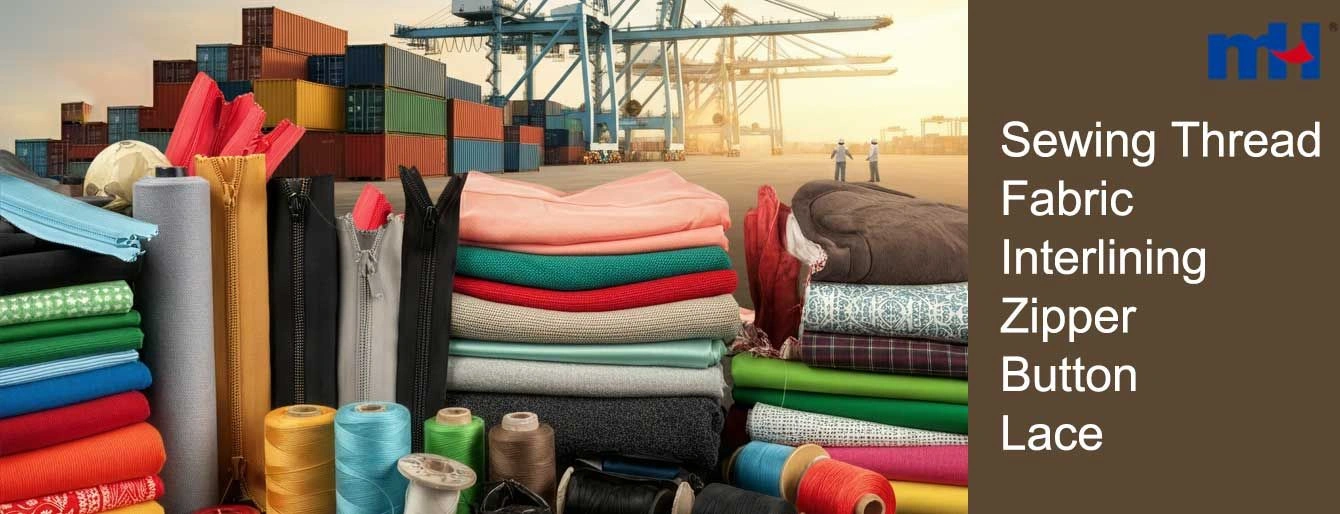Saudi Arabian Commercial Guide to Importing Textiles from China

The textile market is one of the most dynamic and fast-growing industries in Saudi Arabia. With the Kingdom’s flourishing emphasis on fashion and apparel, businesses are finding lucrative opportunities in importing high-quality textile products from global markets. Among these, China remains a premier and dependable source for fabrics, interlining, buttons, zippers, and threads.
If you're looking to jump-start or optimize your textile imports from China to Saudi Arabia, this guide will walk you through the process. We'll cover key steps, regulations, and what to consider to ensure a smooth and efficient import operation.
Why Source Textiles from China?
China dominates the global textile market, thanks to its extensive manufacturing capacity, cost efficiency, and variety of offerings. For businesses in Saudi Arabia, importing from China offers several notable advantages:
- Wide Product Range
From fabrics and interlining to zippers and buttons, Chinese manufacturers provide a vast selection that caters to industries ranging from fashion to upholstery. This versatility allows Saudi businesses to cater to diverse market needs.
- Scalable Pricing
Whether you’re a small boutique or a large enterprise, China offers products at price points that accommodate various budgets, making it a flexible choice for importers.
- Customizable Options
Many Chinese suppliers offer customization, allowing businesses to tailor products like fabrics, clothing pieces, or accessories to specific designs, patterns, and materials.
Understanding these advantages makes it clear why Chinese textiles are a natural choice for Saudi businesses aiming to remain competitive in the growing fashion industry.
Key Textile Products for Import
Before initiating your import strategy, it’s essential to know which products align with market demand and your business objectives. Below is an overview of essential textile categories relevant to Saudi Arabia's importing market:
1. Fabrics
The core of the textile industry, fabrics imported from China range from luxurious silk to versatile cotton and synthetic blends. Consider sourcing fabrics like:
- Cotton: Ideal for traditional clothing and everyday wear.
- Silk: A popular choice for abayas and high-end apparel.
- Polyester: A cost-effective option with durability for casual and sportswear.
2. Interlining
Interlining adds structure and support to garments. Non-woven and woven interlinings are widely sourced for tailoring and secure construction in the fashion industry.
3. Zippers and Buttons
Zippers and buttons are small but essential components for any garment. Chinese suppliers often offer high-quality, durable options, including:
- Invisible zippers for formal wear
- Custom-dye buttons for unique designs
4. Threads
Threads form the backbone of garment production. Ensure you import high-strength threads to promise durability and quality in your final products.
5. Accessories
Additional items like laces, sequins, and ribbons are frequently in demand, especially for Saudi Arabia's evolving focus on modern and embellished fashion.
Steps to Import Textiles to Saudi Arabia
Whether you're an experienced importer or a newcomer, following these steps can streamline your process and minimize obstacles:
1. Research Suppliers
Begin by researching credible suppliers. Use platforms like Alibaba, Made-in-China, or contact trade consultants to find reputable manufacturers with positive reviews and exporting experience to Saudi Arabia.
2. Verify Regulatory Compliance
Saudi Arabia maintains strict import regulations to ensure the quality and safety of goods entering the country. Ensure all imported items comply with:
- Saudi Standards, Metrology, and Quality Organization (SASO) standards
- Certification of conformity (CoC), issued by authorized entities in China
3. Understand Tariffs and Taxes
Familiarize yourself with Saudi customs duties and VAT (Value Added Tax). Textiles generally fall into specific tariff categories depending on their classification. Skipping this step may lead to unexpected costs.
4. Negotiate Pricing and Terms
Work with suppliers to negotiate favorable prices and terms. Request samples before finalizing bulk purchases to confirm product quality meets expectations.
5. Arrange Logistics
Decide between air freight for faster delivery or sea freight for cost efficiency. Partner with freight forwarders who have experience in China-Saudi shipping routes to simplify the process.
6. Clear Customs
Submit all required documentation at Saudi ports of entry. Common documents include:
- Commercial Invoice
- Certificate of Origin
- Packing List
- Bill of Lading
Work closely with a customs broker to expedite clearance and ensure compliance with all policies.
Regulations When Importing Textiles to Saudi Arabia
Compliance with Saudi Arabia’s import policies is crucial for businesses to import textiles legally and seamlessly. Below are key regulations to bear in mind:
- Labeling Requirements: Imported goods, especially clothes or fabrics, must include detailed labeling indicating the product description, material composition, and country of origin.
-
- Restricted Materials: Certain chemicals used in manufacturing fabrics are prohibited under Saudi regulations. Ensure compliance with these rules by requesting detailed manufacturing documentation from your suppliers.
- E-Commerce Integration: When selling imported textiles through e-commerce channels in Saudi Arabia, you must adhere to additional regulations, including product visibility standards and consumer protection laws.
Building a Competitive Edge in Saudi Arabia’s Textile Industry
The fashion and textile sector in Saudi Arabia is evolving rapidly, with diverse consumer preferences and an upswing in demand for both traditional and modern designs. To maintain a competitive edge as an importer:
- Focus on Quality: Saudi consumers value high-quality fabrics and garments. Collaborate with manufacturers who maintain consistent product quality.
- Stay Ahead of the Trends: Monitor emerging trends in global and local fashion markets to offer products that resonate with evolving tastes.
- Engage with Communities: Foster relationships with retailers, wholesalers, and designers within Saudi Arabia who can help distribute your products effectively.
Why Now is the Perfect Time to Import Textiles from China?
The rise of e-commerce platforms, coupled with growing fashion trends, has opened up new possibilities in Saudi Arabia. Whether you’re looking to tap into the premium abaya market or meet demands for leisurewear and formal clothing, importing from China can offer a pathway to achieving your business goals.
Follow this guide, and take full advantage of China's capabilities while adhering to Saudi Arabia's regulations. By doing so, you can confidently expand your horizons in the textile market.
